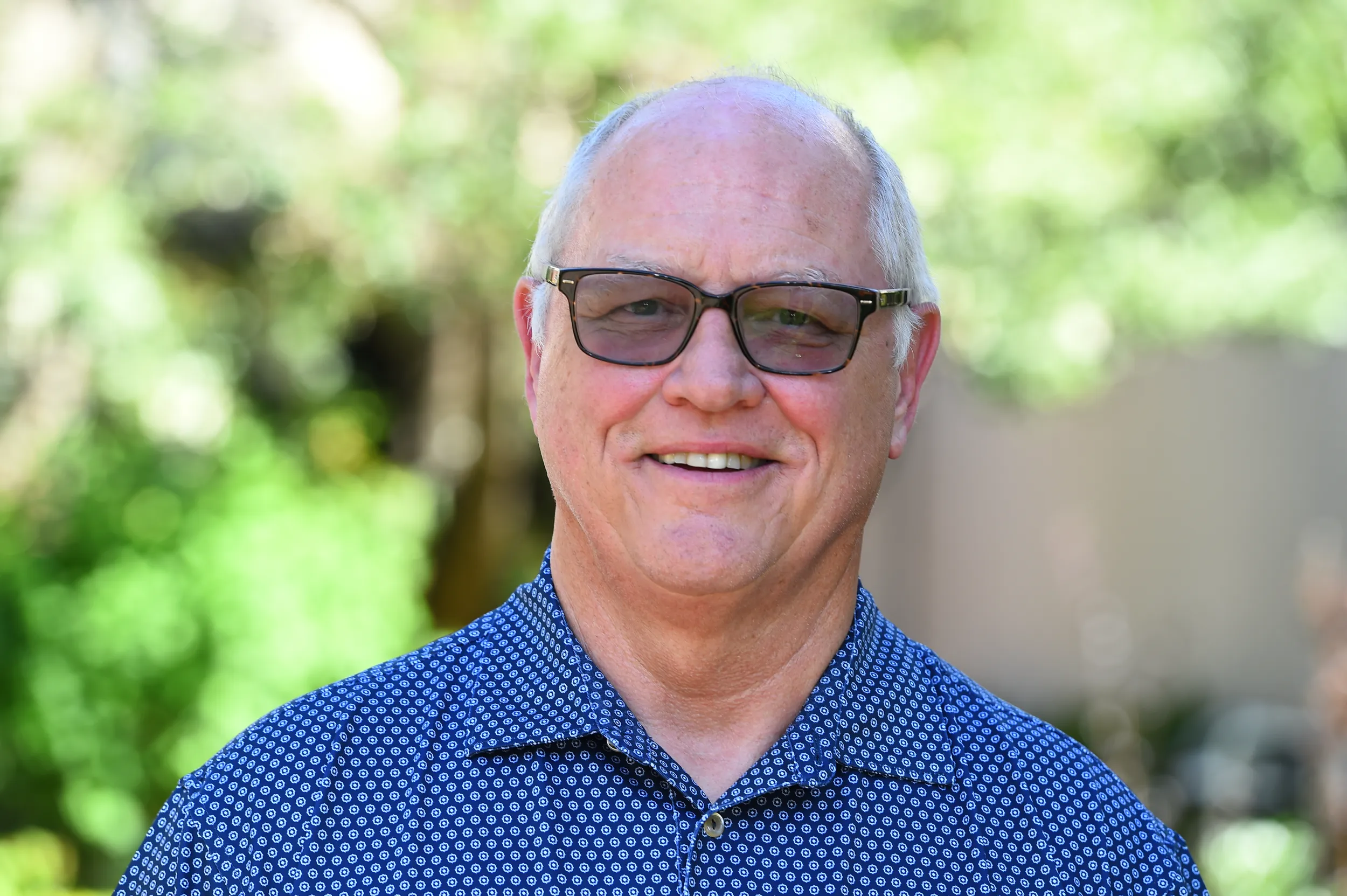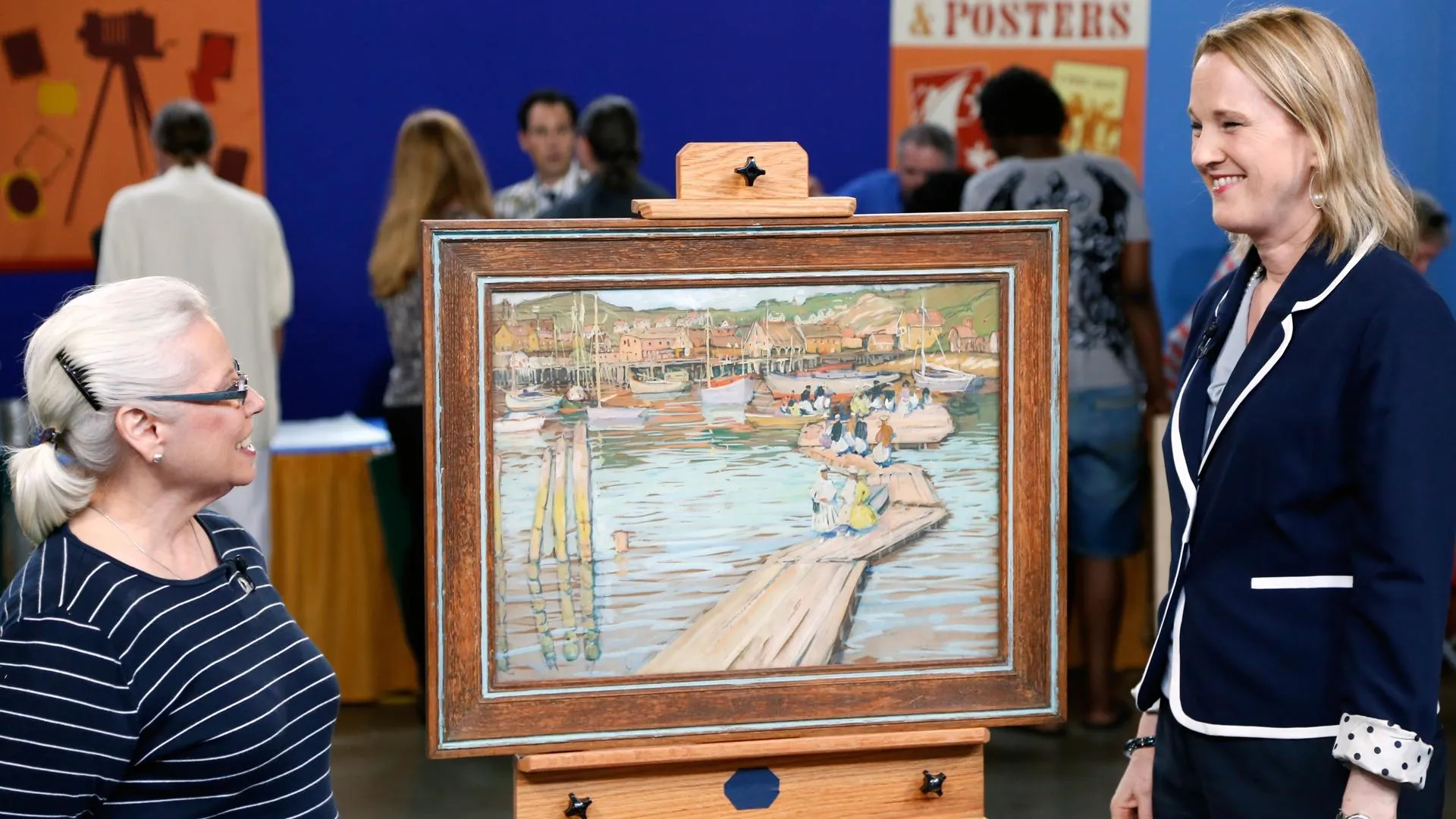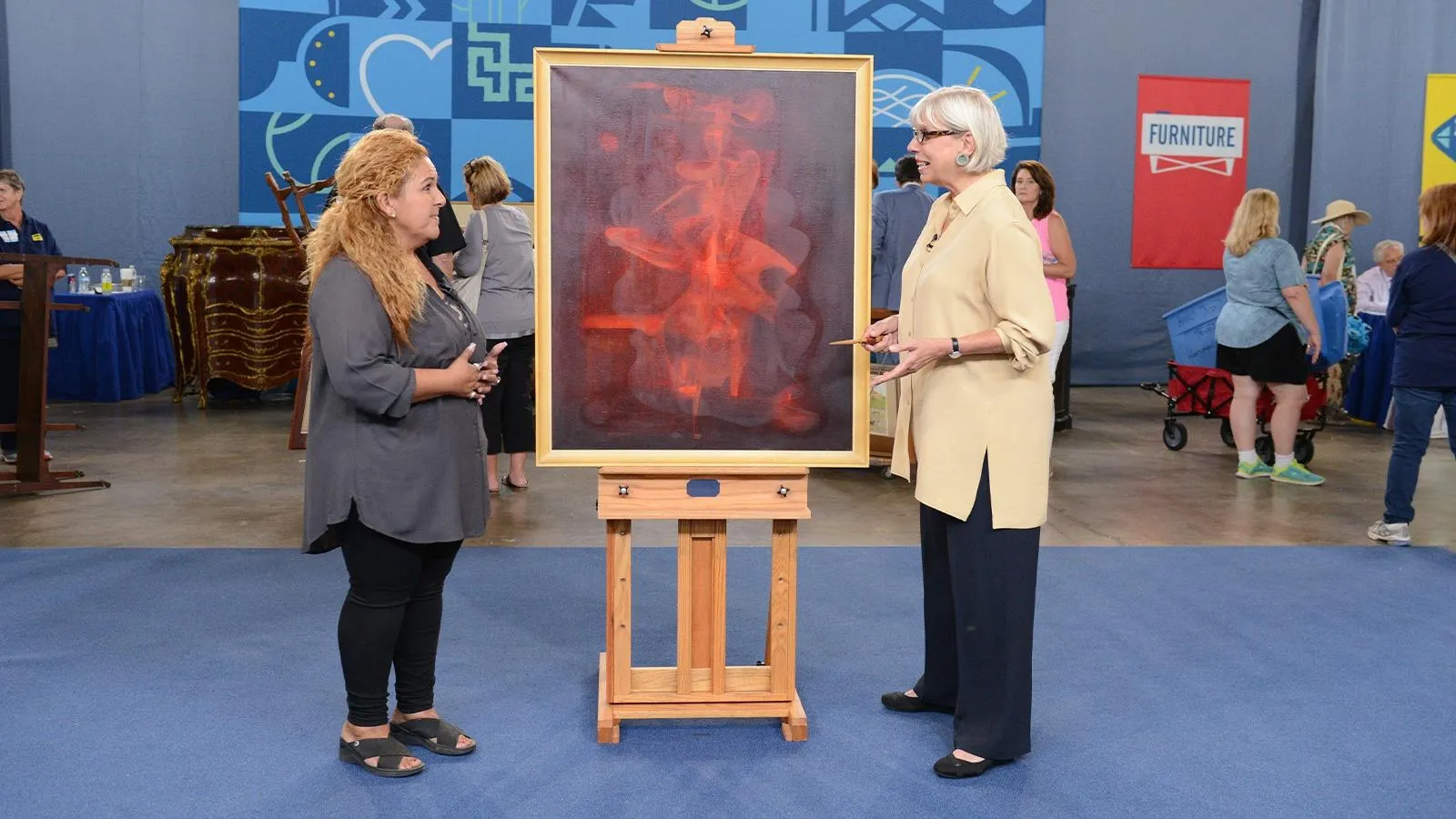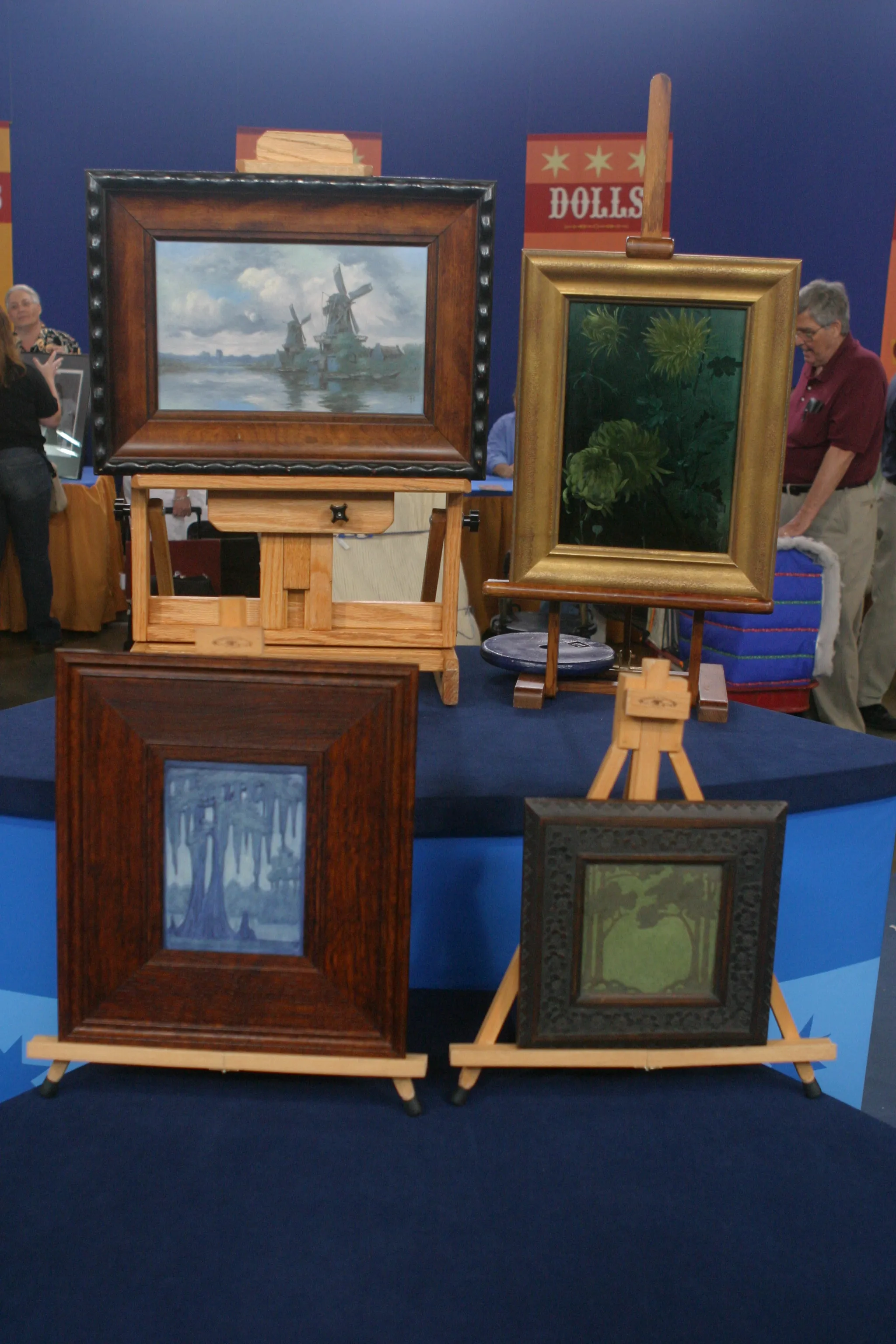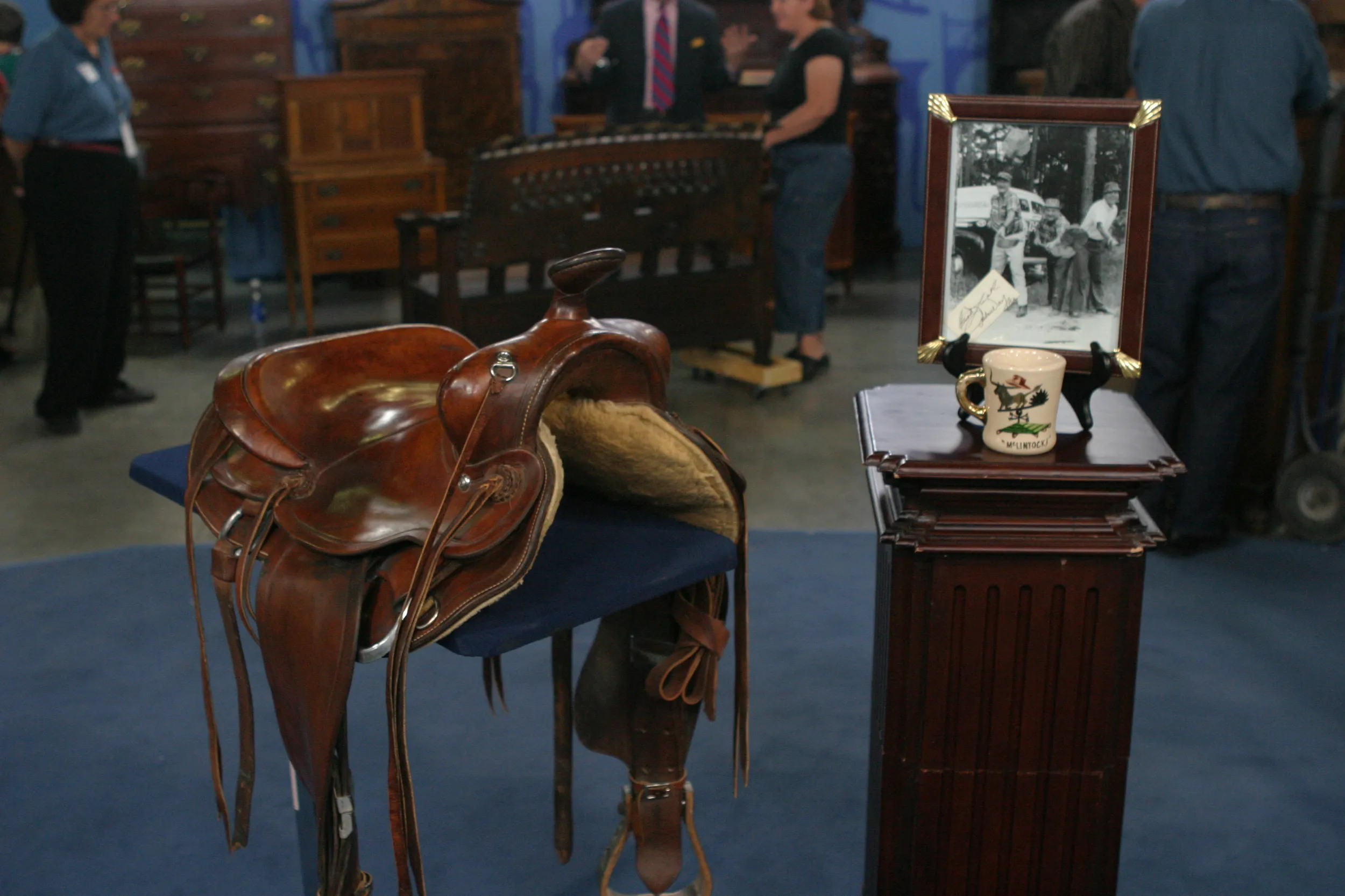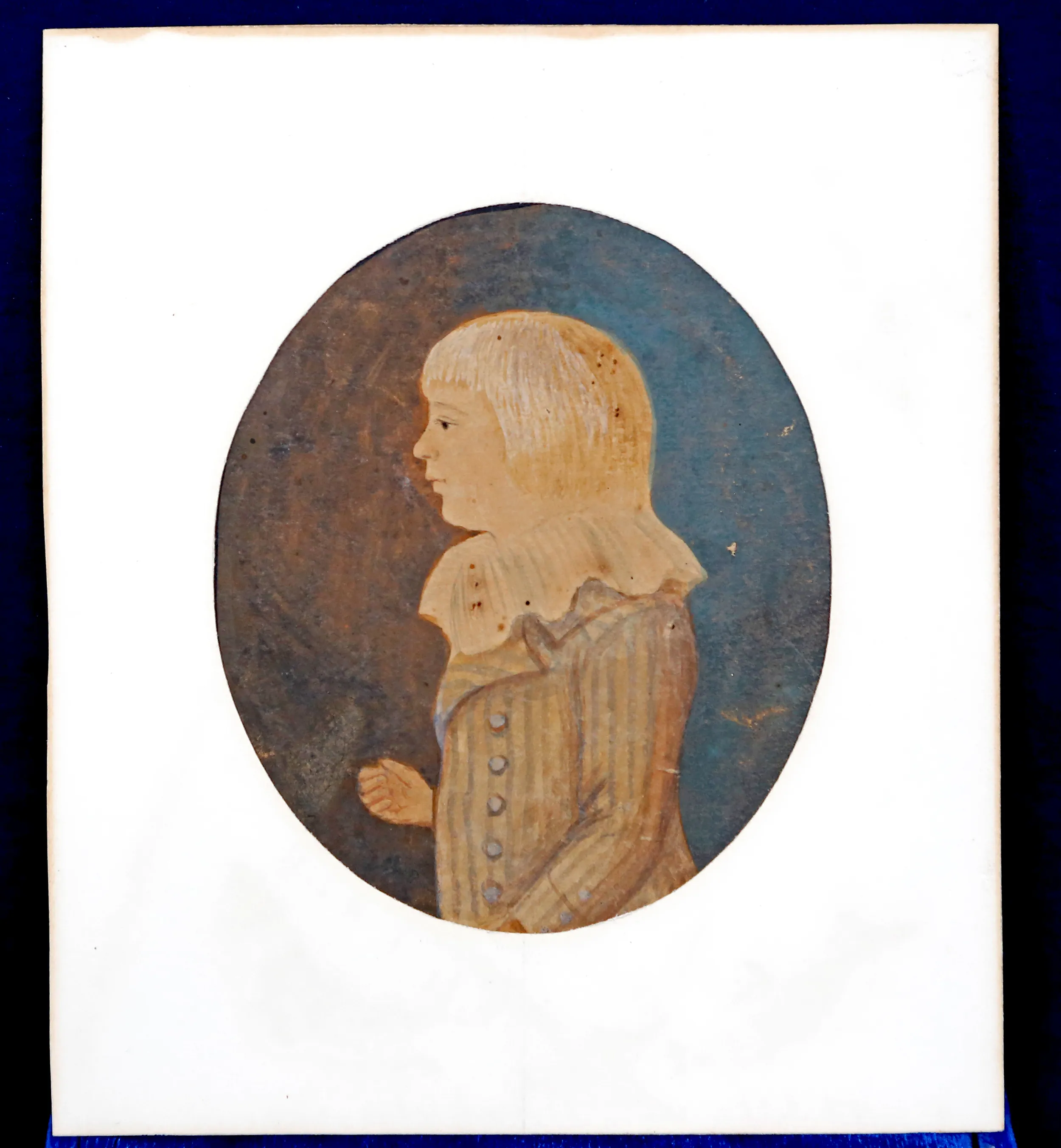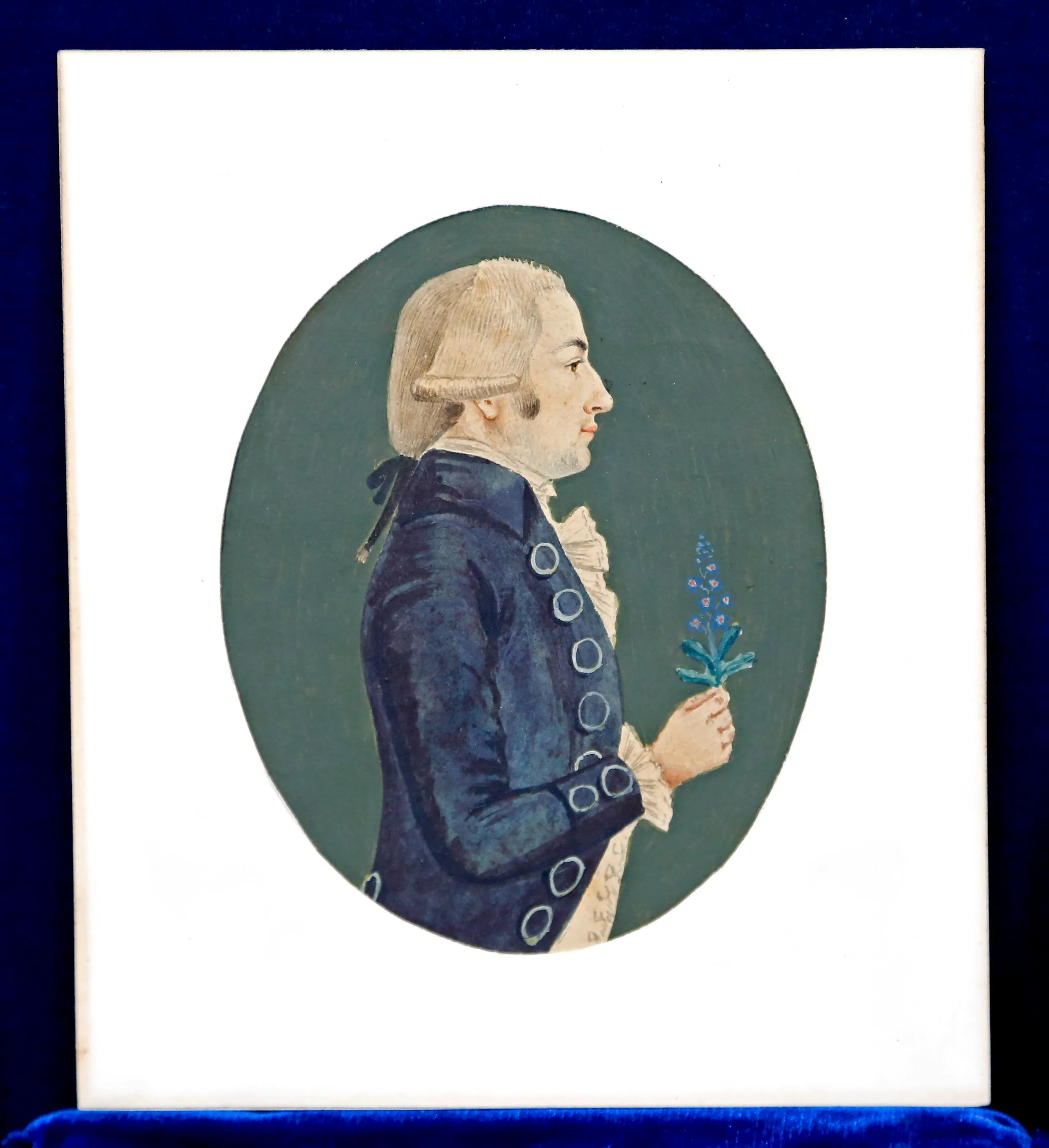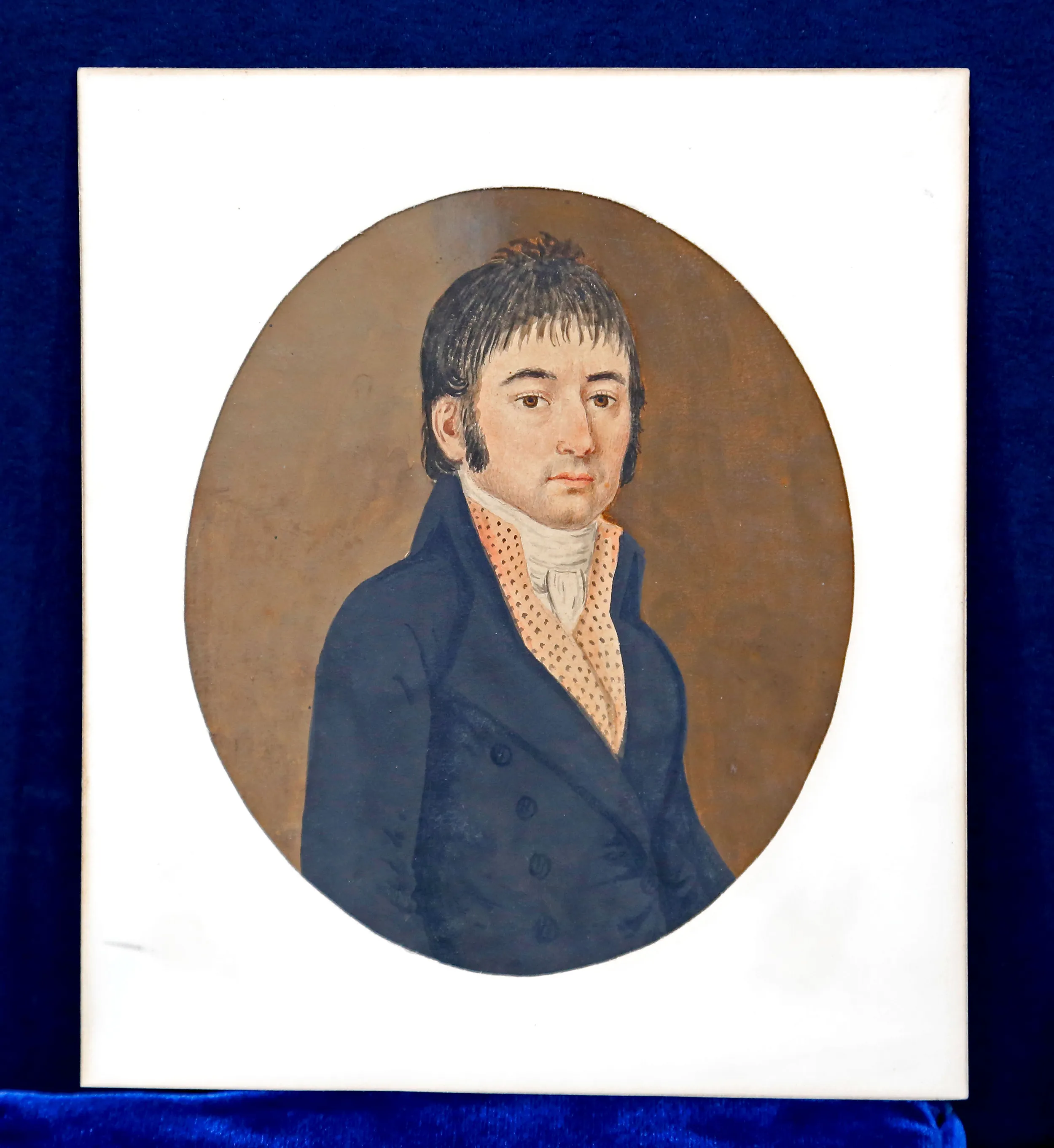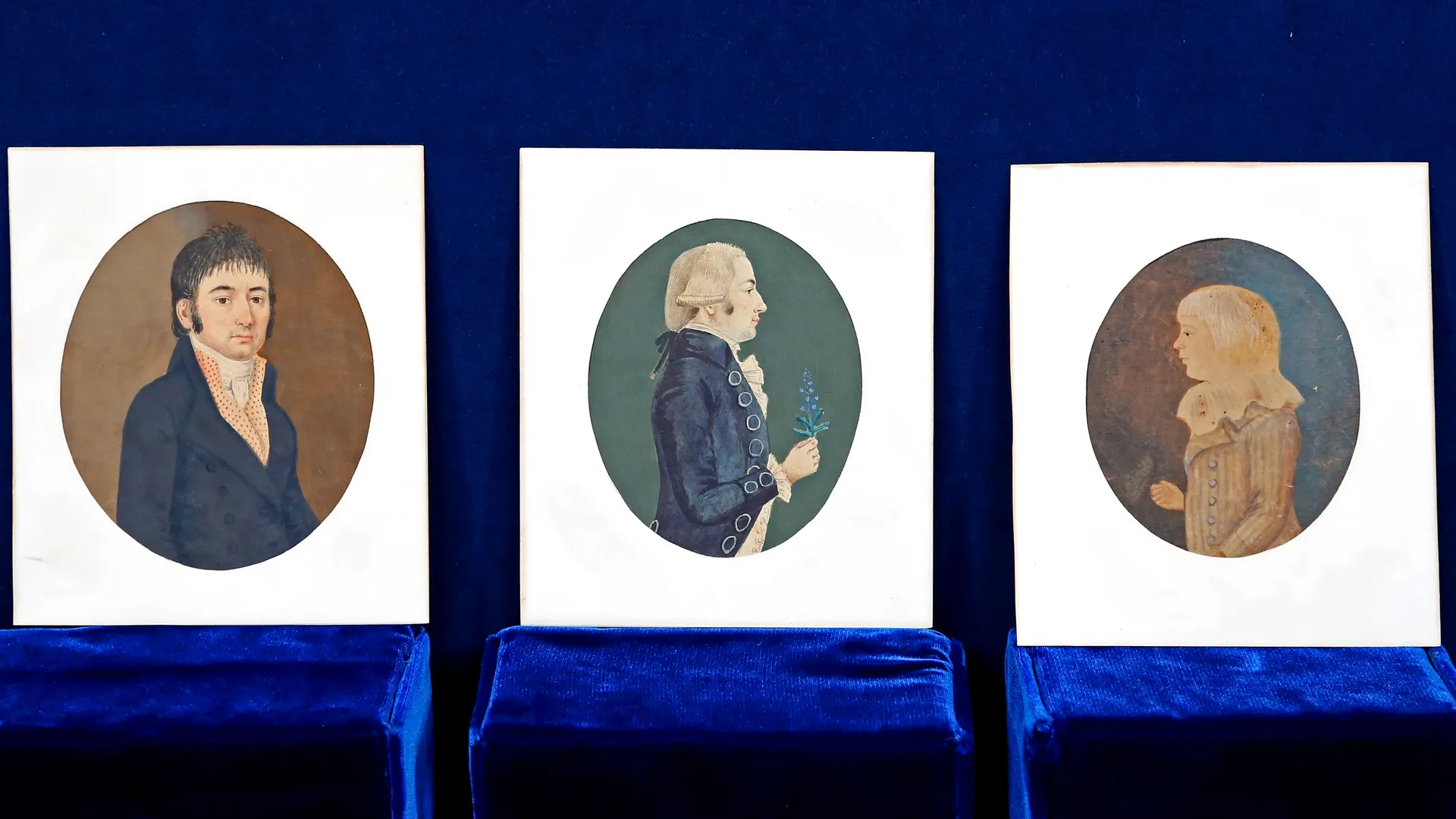GUEST: Well, I found them at a local thrift store and they were in a bin, and they were 25 cents apiece. I've had them two years, and I took the backs off of them because they were all really bad and everything, and I figured the paper on the back was probably ruining the picture, if anything. And then found out that they were glued onto an old photograph, but I just left them as they were.
APPRAISER: Well, that was smart. (chuckles) And this place that you got them, is that just somewhere where people consign stuff or they just...
GUEST: No, it was one of the big thrift stores, and they just... A little thing they call the Bargain Barn, and they put all the stuff that they don't think they can sell, or they don't want to sell because there's something wrong with it. So they put it in this store and they sell everything really cheap.
APPRAISER: When we get done here, we're going there.
GUEST: (laughter) Okay.
APPRAISER: When you walked up to the table with these, the first thing I wanted to do was get my jeweler's loupe out and look at them.
APPRAISER: I realized that they are watercolors. The thing that drew me into them was, especially the two over there closest to you, the faces are amazing, and I love the way that the backgrounds are dark, and it makes them kind of pop off of there. I'm not sure that they were all three done by the same hand.
APPRAISER: When you flip them over, you can see the family names on the back.
GUEST: Mm-hmm, yeah.
APPRAISER: But what they've done, as you said, they've taken an existing photograph from the 1920s or '30s and cut it out and then glued that on there. And I would say, you would need to get those steamed off of there and maybe get the paper stabilized by a conservator. It might cost $200 to get each one done. Using the family name of Sherdlan, which I thought it was, I found a lot of them in New York later on in the 19th century, but I also found some in the valley of Virginia in the early 1800s. When I look at something like this and think about the value, the first thing I want to think about is, is it American? And we all think that they're American. I want to think about, how well done is it? And if you look at the difference in execution between the faces and the clothing and the hands, then you would say that that is a naive style of portraiture. The guy closest to you, he's in a frock coat, he's got a polka dot vest. I mean, he's a dandy. The guy in the middle is dressed more like somebody from the city would have been in the late 1700s. This portrait of this young child, that's probably a boy. Back then, lots of times, boys were dressed very similar to the way girls were dressed. We need to do some more research on these. We need to figure out where they were painted or attribute them to a maker, because if we could tie them to Virginia, their value would be higher than if they were somewhere else in the country, say, New England or even Pennsylvania, where more people lived and there was more things like this made. Conservatively, right now, with what I know, in today's market, I would do an auction estimate on these of $3,000 to $5,000. We figured $1,000 to $1,500 each, give or take. If we find out that they're from Virginia, then the value could possibly double, maybe more.
GUEST: Not a bad investment. (chuckles)
APPRAISER: I was gonna say, what does 75 cents divided into $5,000 equal out to, anyway? I appreciate you bringing them in.
GUEST: Okay, thank you very much.
